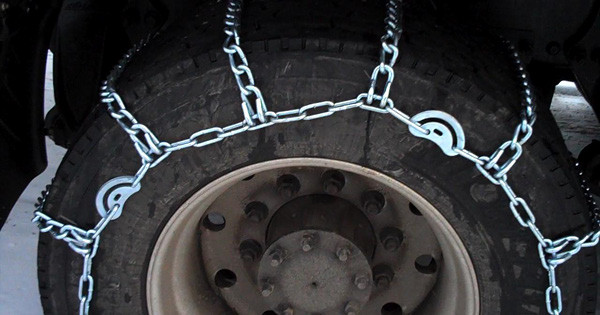Daylight Savings Time will “fall back” at 2:00 a.m. on Sunday, November 2.
Make sure all drivers are aware of this time change. Caution route drivers especially that the amount of daylight will shift based on their stops. An intersection or street can present new challenges to drivers with just one hour’s difference in the position of the sun. Even a single hour can create unique visibility changes for drivers on a route.
Got Chains?
If you operate in a state that requires tire chains, make sure the chains are the correct size,
properly secured, clean, and not broken so they can be easily applied when necessary.
Not sure about your state’s chain laws? Visit:
http://www.tirechainsrequired.com/laws.html
O’ Say Can You See?
Not only is this the opening line of the United States National Anthem, but it’s also a question every driver should ask before operating a vehicle. Your vision and awareness of the road and surroundings are critical for safe driving and for preventing damage or injury to yourself and others.
During a recent road trip to a neighboring state, we observed several vehicles putting themselves—and everyone else—at risk by driving unsafely in low-visibility conditions such as rain and nighttime.
Nighttime Driving
Night driving is more difficult because visibility is reduced. However, low-visibility conditions can also occur during the day due to heavy snow, downpours, thick fog, blowing dust, or smoke. Follow these safety tips
when driving in low-visibility conditions:
-
Slow down. Disengage your cruise control. Most accidents occur because drivers go too fast for the weather conditions.
-
Use your low beams. High beams reflect off fog or snow, reducing visibility for you and other drivers.
-
Keep your lights clean. Make sure all lights are free of bugs, dirt, and road film to provide maximum visibility. Avoid entering areas where you can’t see a safe distance ahead.
-
If you lose visibility suddenly, pull off the road as far as possible. Stop, turn off your lights, set the emergency brake, and take your foot off the brake so your taillights are not illuminated. Turn on your emergency flashers.
-
If you can’t pull off the road, slow down, turn on low beams, and sound your horn occasionally. Use the white fog line or roadside reflectors to help guide you.
-
Never stop in travel lanes.
Driving in Rain
Many drivers underestimate how dangerous rain can be and tend to drive too fast. When operating a truck, check your mirrors—you’ll see how much water spray your tires generate. That spray can easily blind the driver behind you.
Remember: you can hydroplane even at 35 mph. Drive at a safe speed for the conditions. Be cautious when bobtailing (driving a tractor without a trailer) in the rain—braking can cause the tractor to spin and lose control because the braking power is not balanced. Many jackknife accidents happen because drivers are traveling too fast and must stop suddenly.
If you’re carrying a light load, you’ll slide even more quickly. When passing another vehicle, ensure there’s plenty of space before merging back into the lane. Water spray can cause you to misjudge distance, leading to potential accidents.
Finally, watch for curves—especially in the rain. Reduced traction can quickly turn a routine curve into a dangerous situation.









